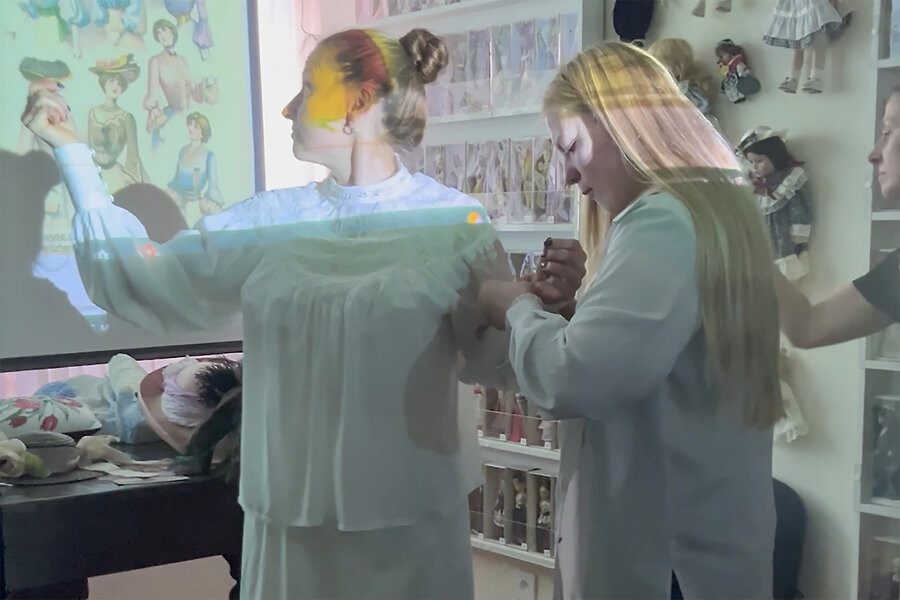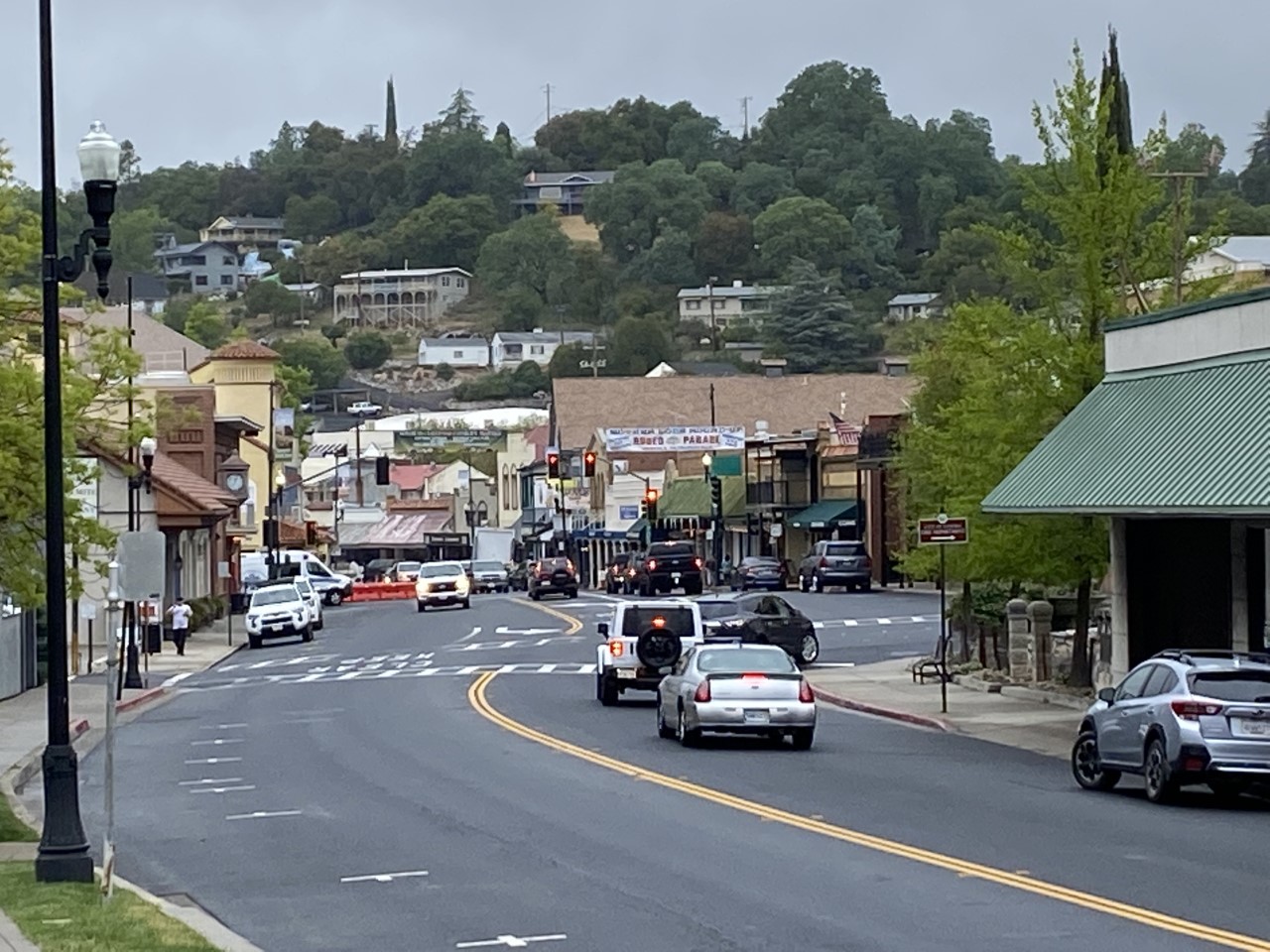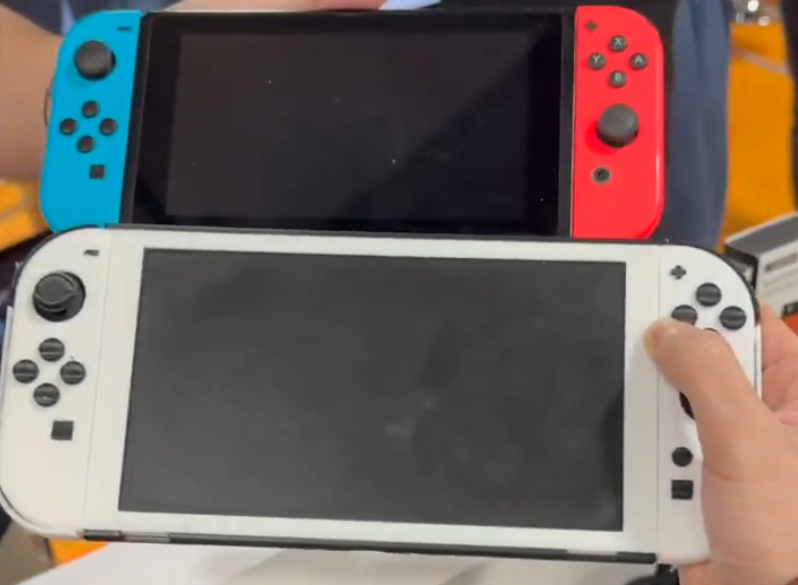Fashion
How century-old fashion is helping Ukrainians escape the grind of war

Dressed in an ensemble that meticulously recreates century-old fashion, Tetiana initially looks out of place standing in the Odyssey Pier Museum.
But for the dozen or so women gathered around her, the dress-up exercise is a much needed break from the omnipresent war with Russia. “In times of war, it is good to have a chance for relief and a good laugh,” says Anna Korshunova, who is lecturing to the group.
Why We Wrote This
A story focused on
Under Russian bombardment, some women in the Ukrainian city of Sumy are finding escape in an unusual way — by exploring their hometown’s history through its fashion, using old photos to recreate costumes.
Moreover, it offers a journey through their city’s past. By exploring the fashion of Sumy in the early 20th century, participants explore not only historical textiles, but the city’s cultural context and significance in a way that was obscured by decades under the Soviet and then Russian shadow.
Ms. Korshunova is motivated to reclaim Sumy’s history “piece by piece,” she says. In Soviet times, she explains, the prevailing narrative cast Sumy as an underdeveloped peasant town. But photographs from the late 19th and early 20th centuries show a different reality.
“You see aristocratic ladies and gentlemen – you understand that this was a rich and developed city,” she says. “We are rebuilding Sumy’s history and giving it back to its people.”
Dressed in an ensemble meticulously recreating a century-old fashion, Tetiana initially looks out of place standing in the Odyssey Pier Museum.
But for the dozen or so women in attendance, laughing in a small conference room lit by a projector as a generator roars outside, the dress-up exercise is a much needed break from the omnipresent war. It’s “just fun,” they say.
Moreover, it offers a journey through the past of their city, sitting less than 20 miles from the Russian border. By exploring fashion in Sumy in the early 20th century, participants can explore not only historical textiles, but the city’s cultural context and significance that was obscured by decades under the Soviet and then Russian shadow.
Why We Wrote This
A story focused on
Under Russian bombardment, some women in the Ukrainian city of Sumy are finding escape in an unusual way — by exploring their hometown’s history through its fashion, using old photos to recreate costumes.
The Odyssey Pier Museum, located on a side street in Sumy’s historic center, is an eclectic exhibition space. Photo exhibits adorn the outdoor courtyard along with a metal pyramid structure covered in ribbons. Graffiti art on one wall expresses a common desire in Ukraine: Russian President Vladimir Putin gazing out of a prison cell.
But when Tetiana came upon it online, she thought the museum seemed like a great place for her circle of friends to mentally get away from Russian attacks on the city, which have been intensifying lately.
“It’s important to have spaces like this, where we can develop ourselves, take our minds off what’s going on, listen to music, or learn about the history of our own city,” says Tetiana, a physics and math teacher who lives in an industrial area targeted by Russia. Fortunately, she has been able to send her teenage son to live in a nearby village, which is both safer and gives her a break.
“On a typical Friday night, we like to be active – sometimes it’s biking, kayaking, or swimming in the river,” she says. “Today, it’s history.”
This Friday’s session offers multiple insights into the fashions of bygone eras. The women marvel at the surprisingly intricate undergarments that structured outfits, and the stork-feathered hats that topped them off. They scrutinize intricate sleeve designs as the lecturer explains how they reflect a clear understanding of mathematical models.
Anna Korshunova, the lecturer, guides the presentation. On a monochrome photo projected onto a white screen, she points out a belt-like ornament that could carry up to five kilograms (11 pounds) of accessories.
In another black and white photo, she highlights a small notebook visible above the folds of a woman’s skirt. “So many men would ask a woman to dance that she had to write their names down to keep track,” she says, triggering more laughs.
Ms. Korshunova highlights three reasons for holding such a gathering. Echoing her audience, she points to the importance of good old-fashioned fun. “In times of war, it is good to have a chance for relief and a good laugh,” she says. But she is equally motivated by a desire to reclaim Sumy’s history “piece by piece” and strengthen the city’s sense of community.
In Soviet times, she explains, the prevailing narrative cast Sumy as an underdeveloped peasant town. But photographs from the late 19th and early 20th centuries show a different reality.
Indeed, the presentation is possible because the museum owns a collection of photographs that had belonged to a local studio; its family and individual portraits captured the spirit of Sumy, which started to make its name and earn its wealth in 1869, when a sugar refinery was built there.
“You see aristocratic ladies and gentlemen – you understand that this was a rich and developed city,” Ms. Korshunova says. “We are rebuilding Sumy’s history and giving it back to its people.”
After the lecture, friends Iryna and Albina take the opportunity to catch up. Their takeaways range from the serious to lighthearted.
“I’d love to wear the hats of that time, but not all those heavy layers from the neck down,” says Albina, an accountant and mother of two who usually reads poetry to decompress.
“It’s interesting to learn that some fashion trends started here before moving north [to Russia],” says Iryna, a real estate agent, who sees such nights out as essential to her mental health and to maintaining a sense of community. “This has been an extra opportunity to find reasons to love our city and laugh.”
The nights in Sumy, she points out, are usually loud with the explosions of Russian missiles and bombs, and of Ukrainian air defense systems. The situation is so bad that she has sent her nine year old daughter to live with her grandparents on the outskirts of town.
“Despite everything, we try to keep our spirits up and our friendships going,” she says, smiling and walking away with her friend, arm-in-arm, into the night.





:max_bytes(150000):strip_icc():focal(717x388:719x390)/Angel-Reese-Tout-1825-7eea960508af47cf8e2fb1ddaaf35ec1.jpg)





